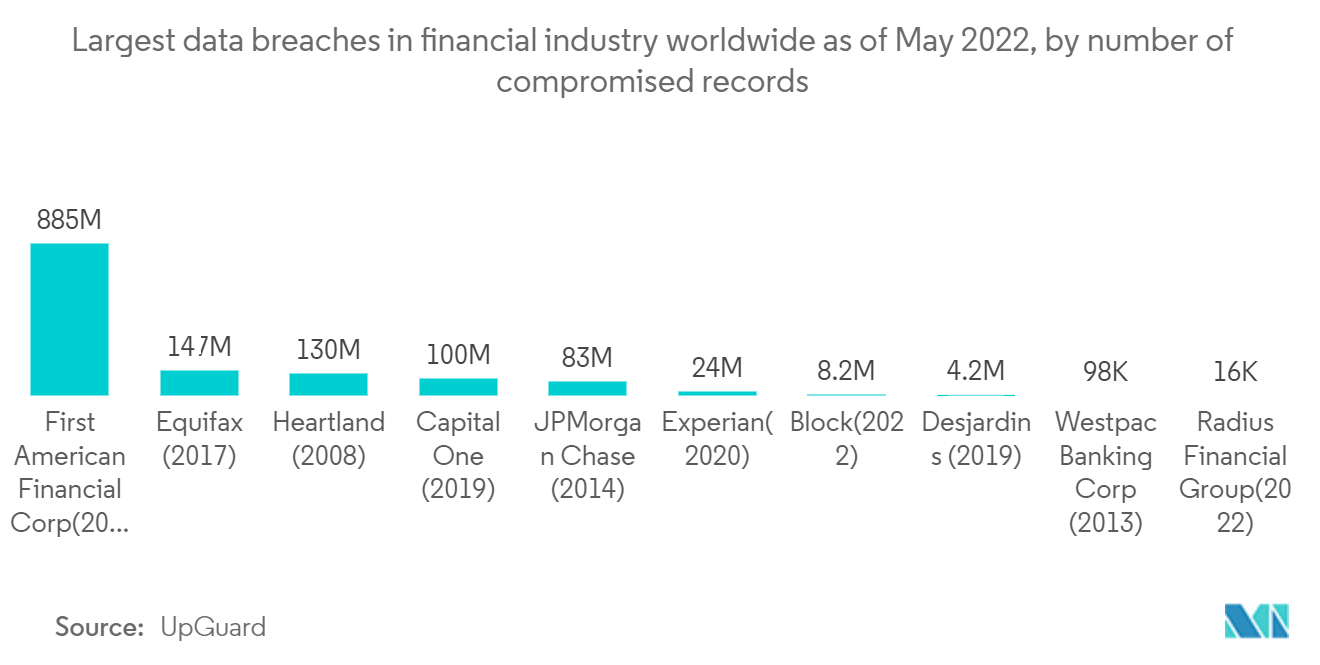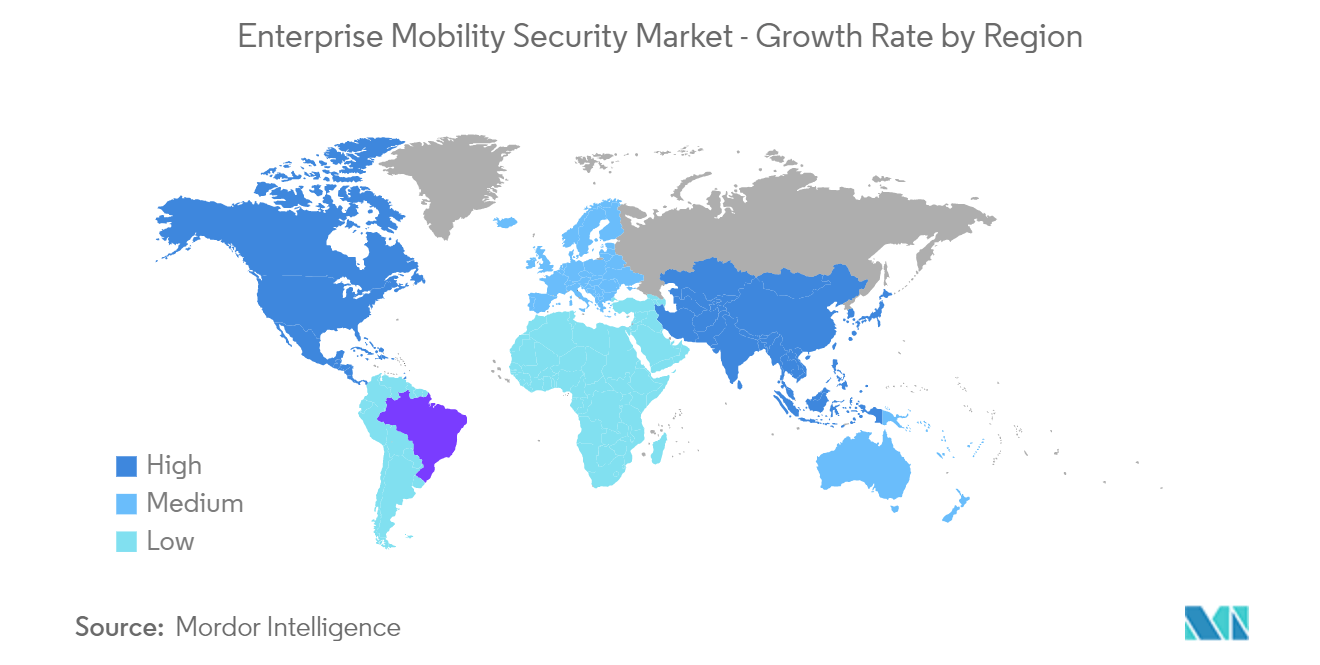Market Trends of Enterprise Mobility Security Industry
Banking/Insurance Industry to Hold Significant Market Share
- Banking/insurance services have been experiencing a business transition with digitization, internet services, and international transactions require fast redressal. Banking, financial services, and insurance (BFSI) have evolved from being a service that requests the customers to visit for the service to a bank that reaches customers at their homes. BFSI stores critical financial and personal data of the customer and clients and uses them to provide services. This creates a threat for security breaches across financial institutes of many countries worldwide. For instance, in August 2022, according to the government of India, the country reported 248 successful data breaches in the banks, out of which Private sector banks reported 205 data breaches, while PSBs reported 41.
- With the changing banking ecosystem, the banking officers need to access the core services on the move and use public network connectivity services to create a unique user experience. Emerging technologies, such as blockchain and voice command integration, are expected to emerge as mainstream for the BFSI over the forecast period, with multi-factor authentication becoming a norm in the market segment.
- Financial institutions employ a modern cybersecurity approach, the Zero Trust model through EMS. Adopting this model can help banks strengthen their security posture, so they can confidently support initiatives that give employees and customers more flexibility.
- The adoption of EMS has been majorly driven owing to the need to meet security compliance in the BFSI sector. Device provisioning, for instance, aids the BFSI organizations in remotely configuring mobile devices and providing access to corporate data resources and enterprise apps. BFSI apps include tools, such as wealth management, mortgages, and insurance, which the employees need to access financial apps through the tablets outside the banks to connect to the customers, which requires EMS software for security purposes, hence driving the market.
- The market segment's opportunity is majorly in the small-scale and cooperative banks, which still have the scope for digitization and adoption of such services. The emergence of video-based banking services is expected to create an opportunity for enterprise-level banking and insurance businesses.

Asia-Pacific to Witness the Highest Growth
- The Asia-pacific region consists of many emerging economies, and increasing digitalization trends across industries in the region is creating an opportunity for the Enterprise mobility security market because due to digitalization and decentralization of business process for flexibility, the usage of many mobile devices such as smartphones, laptops, and tablets are increasing in the services.
- Additionally, according to the Asia-Pacific digital transformation report published in August 2022 by the United Nations, the mobile industry has made yearly investments in services, infrastructure, and other advancements over the past five years. More than USD 400 billion of this total was invested in Asia and the Pacific. As a result, the countries of the Asia-Pacific are becoming more connected to one another and to the rest of the globe, which is fuelling the market growth in the region.
- Companies in the Asia-Pacific region are embracing BYOD to increase employee satisfaction and productivity, especially in China and India. The growth in high-speed network coverage and smartphone adoption leads to a surge in the use of mobile data in Asia-Pacific.
- Banks have activated remote working tools, allowing their employees to work from home. Financial service providers have deployed live-stream events moving from physical to virtual customer events, and online training for remote servicing is picking up. However, these kinds of scenarios are expected to increase the demand for mobility security services.
- The adoption of 5G in government administration supports the development of smarter utilities, cities, and public safety agencies. Central banks are using the underlying technologies, such as blockchain, and they support the use of technology to encourage further innovation. Due to 5G and AI, every industry is evolving; the government can increase its transportation productivity by implementing smart transportation technologies and connected vehicles. Digital connections have also given society a whole new way to help people. This trend of adoption of smart technology increases the risk of security breaches in the region, which is creating an opportunity for the enterprise mobility security market across various end-user industries in the region.


